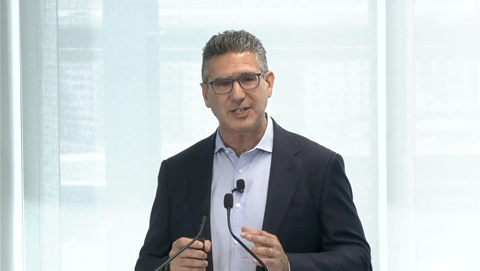The University of Canberra has managed to overcome the challenge of incorporating AI and deep learning into its curriculum by transforming its IT capabilities.
Justin Mason, associate director for vendor and operations at the University of Canberra discussed with Digital Nation how it was able to deliver high-powered AI research to its students with the help of the Nutanix Cloud Platform.
The university found one benefit of the platform was it enabled students and researchers to access all the computing power they need from anywhere without requiring costly computers, but rather their own standard laptop.
From here users can log in to the portal and access all the computing resources, based at the university’s data centre, as needed.
Students have responded positively to the new platform, according to Mason.
“Where we saw as biggest uptick in appreciation from students is when we added a GPU capability.
“That was adding in video GPU cards that give students extra resources.
"You can use that GPU computational power for some of the students who do subjects like, deep learning and AI that need the additional hardware to do those complicated tasks.
Mason said the university is now considered to be completely migrated over to the new platform.
“We're about probably 90 percent now in terms of all of our on-prem infrastructure on Nutanix and on the Nutanix AHV platform, and that's a variety of workloads, production workloads, test and dev, our Oracle rack clusters [and] virtual desktop infrastructure as well.”
“We've got Nutanix infrastructure for our researchers, so it's the full gamut at the moment.
“It's probably been that way for a few years now and … that's made our yearly infrastructure refresh cycle a lot easier and a lot quicker.”
He added the university is now working through other legacy platforms and replacing legacy infrastructure.
The biggest result for the team has been a reduction in its data centre footprint, according to Mason.
“Back when we first adopted the hyperconverged platform, what we didn't realise at the time was the impact it would have on drastically reducing our data centre footprint and our physical infrastructure footprint.”
“The way the timing worked; we just built a new data centre in one of our administration buildings here in Canberra.
Mason said that the data centre “had a large amount of capacity based on the three-tier architecture we used to buy”.
Under the new platform, Mason said the university ended up “reducing our data centre requirements rather than increasing them.”
He said the calculations reached around 75 to 80 percent reduction in the physical footprint that is needed in data centres.
“There's also significant financial savings.”
Mason said before the change the university was using “a lot of legacy three-tier infrastructure” and “it was also taking up, not only significant investment from a financial point of view but also physical footprint in our data centre.
Mason said the university opted to switch up technology tactics when converting up its server infrastructure.
“Back when we first looked at the platform, we were looking at it for virtual desktop infrastructure.
“The project for that particular aspect didn't get off the ground,” he added and soon began its hyperconverged journey.
Moving forward the university is now looking at more products to add to the platform “around automation orchestration in terms of being able to deploy applications and workloads in a more automated fashion.”
Read more about the state of modern IT infrastructure via our Cloud Covered report here.




_(5).jpg&h=140&w=231&c=1&s=0)




.png&w=100&c=1&s=0)

 Digital Leadership Day Federal
Digital Leadership Day Federal
 Government Cyber Security Showcase Federal
Government Cyber Security Showcase Federal
 Government Innovation Showcase Federal
Government Innovation Showcase Federal
 Digital NSW 2025 Showcase
Digital NSW 2025 Showcase












_(1).jpg&h=140&w=231&c=1&s=0)



